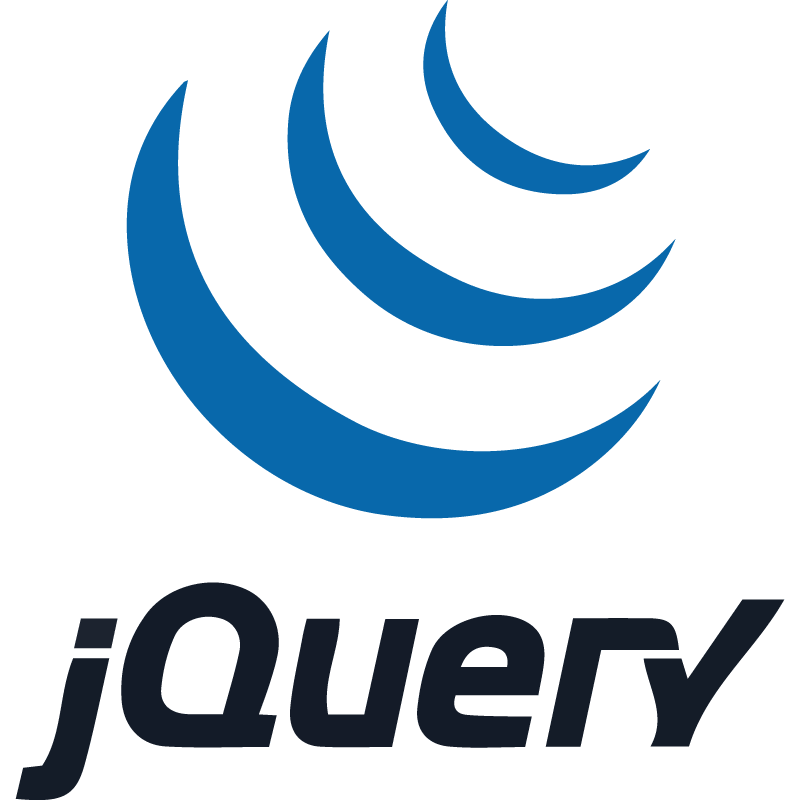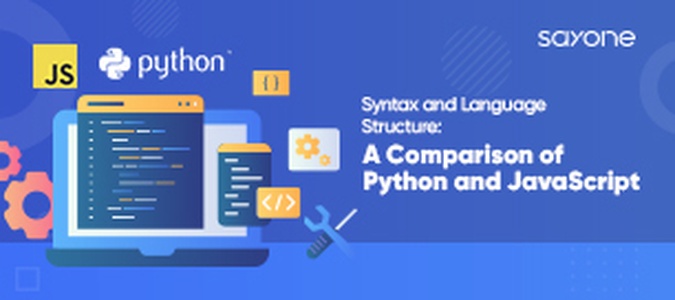Top 7 JavaScript Libraries 2023 | Choosing the Right One

Share This Article
Syntax and Language Structure: A Comparison of Python and JavaScript
Table of Contents
Subscribe to Our Blog
We're committed to your privacy. SayOne uses the information you provide to us to contact you about our relevant content, products, and services. check out our privacy policy.
What Are JavaScript Libraries?
JavaScript libraries are pre-written collections of JavaScript code that simplify the development of web applications. They offer ready-made solutions for common and complex tasks, such as DOM manipulation, framework setup, and AJAX handling. These libraries streamline development, reduce code complexity, and enable mass reuse, making them valuable asset for web developers.
With the vast number of JavaScript libraries available, developers can choose from various options to suit their project requirements. By leveraging these libraries, developers can save time and effort by utilizing the existing codebase and focusing on building the unique aspects of their web applications.
Which are the Most Popular JavaScript Libraries of 2023?
- jQuery
- React
- Vue.js
- D3.js
- Lodash
- Moment.js
- Chart.js
jQuery
jQuery is a widely used JavaScript library that simplifies web development by providing an easy-to-use API for manipulating HTML elements, handling events, making AJAX requests, and creating dynamic effects. It eliminates the complexities of cross-browser compatibility and offers a concise syntax resembling CSS, making it beginner-friendly. With its lightweight nature and extensive plugin ecosystem, jQuery remains a popular choice for developers looking to streamline their JavaScript code and enhance user interactions on the web.

Features of JQuery:
- Easy-to-use API: jQuery provides a straightforward and minimalistic API, making it beginner-friendly and easy to grasp.
- CSS3 Selectors: By leveraging CSS3 selectors, jQuery simplifies manipulating style properties and finding elements on the web page.
- Lightweight: With a compressed size of just 30 kb, jQuery is a lightweight library that ensures faster load times and efficient performance. It also supports an AMD module for modular development.
- Beginner-friendly syntax: jQuery's syntax bears similarities to CSS, allowing beginners to understand and apply its concepts in their projects quickly.
- Extensibility: jQuery is highly extendable through a vast ecosystem of plugins, enabling developers to enhance its functionality and add custom features.
Pros of using JQuery:
- Cross-browser compatibility: jQuery eliminates the hassles of cross-browser inconsistencies, providing a unified development experience.
- Concise code: jQuery allows developers to accomplish complex JavaScript operations with minimal code, reducing development time and effort.
- Ajax integration: Adding Ajax functionality to applications becomes effortless with jQuery, enabling smooth data retrieval and updates without page reloads.
- Built-in UI and effects libraries: jQuery includes pre-built user interface components and effects, empowering developers to create interactive and visually appealing web interfaces without reinventing the wheel.
Cons of using JQuery:
- Additional JavaScript overhead: Including jQuery in a project adds extra JavaScript files, which may slightly increase the page load time.
- Learning curve: While jQuery is beginner-friendly, mastering its full potential may take time for some developers, especially when working with complex scenarios.
- Performance considerations: In certain scenarios, well-optimized non-jQuery code may outperform jQuery, so evaluating performance requirements before implementation is essential.
- Plugin quality variation: With many plugins available, the quality and reliability of jQuery plugins can vary. Thorough evaluation and testing are necessary before integrating third-party plugins into projects.
Checkout The 7 Best Java IDEs and Editors in 2023
React
React is a powerful JavaScript library for building user interfaces. It follows a component-based approach, allowing developers to create reusable UI components that efficiently manage application state and updates. React provides optimal performance for complex web applications with its virtual DOM and efficient rendering techniques.
It is widely adopted for its simplicity, scalability, and ecosystem of supporting tools. React's popularity among developers stems from its ability to create interactive and dynamic user interfaces while maintaining a modular and maintainable codebase.
Features of React:
- Component-based architecture: React utilizes a component-based approach, encapsulating UI elements into reusable and modular components. This promotes code reusability and maintainability.
- Virtual DOM: React leverages a virtual DOM, an in-memory representation of the actual DOM. This allows React to efficiently compute and apply only the necessary updates to the actual DOM, improving performance.
- Selective rendering: By efficiently updating only the necessary components and elements, React minimizes the need for full-page rendering, CSS recalculations, and layout adjustments, leading to optimized app performance.
- JSX support: React supports JSX, a syntax extension that combines JavaScript and HTML. JSX simplifies component rendering by allowing the nesting of elements, attributes, JavaScript expressions, and conditional statements.
Pros of using React:
- Readable code: JSX improves code readability by providing a clear representation of component structure and composition.
- Server-side rendering: React allows rendering on the server side, enabling better performance and search engine optimization.
- Testability: React is highly testable, with tools like Jest facilitating unit testing and integration testing.
- Framework compatibility: React can be seamlessly integrated with other frameworks, such as Backbone.js or Angular.js, as it focuses primarily on the view layer.
Cons of using React:
- Limited scope: React is primarily a view layer library, so developers still need to integrate additional code for tasks like Ajax requests and event handling.
- Library size: React itself has a larger footprint compared to some other libraries, which may impact initial load times.
Steep learning curve: React introduces new concepts and patterns, which may require additional effort for developers who are new to the library.
Read More on React.JS: Is it a Frontend or Backend Framework?
Vue.JS
Vue.js is a progressive JavaScript framework that is often used as a library. It allows developers to build interactive and dynamic user interfaces for web applications. Vue.js offers an intuitive syntax and a component-based architecture, making it beginner-friendly and easy to learn. With its two-way data binding and reactivity system, Vue.js simplifies state management and updates in real time. The framework's versatility, the extensive ecosystem of plugins, and community support make Vue.js an essential JavaScript library for developers in 2023.

Features of Vue.JS
- Browser Compatibility: Vue.js supports ES5-compliant browsers, ensuring compatibility across various platforms.
- Lightweight Core Library: Vue.js focuses solely on the view layer, providing a small, approachable core library that simplifies development.
- Ecosystem Support: Vue.js integrates well with other libraries, offering additional tools to manage complexities often associated with building one-page applications.
- Blazing-Fast Virtual DOM: With its efficient virtual DOM implementation, Vue.js delivers excellent performance, allowing for seamless rendering and faster updates. It also has a compact runtime size of around 20 kb, further enhancing performance.
Pros of using Vue.js:
- Small Runtime Library: Vue.js offers a compact runtime library, resulting in faster load times and improved performance.
- Comprehensive Documentation: Vue.js provides thorough documentation with practical examples, making it easy for beginners to understand and utilize the available options.
- Familiar Technology Stack: Vue.js leverages familiar technologies such as JavaScript, HTML, and CSS, simplifying the learning curve for developers..
Cons of using Vue.js:
- Limited Support: Unlike Angular or React, Vue.js may lack the same level of support and financial backing from large tech players, making it more commonly used for smaller projects..
- Component Approach: Vue.js's component approach, while effective, may need to catch up to competitors like React in terms of flexibility. However, it is important to note that Vue.js is a full-featured framework, while React primarily focuses on rendering components.
Checkout Best 5 Automation Testing Tools of 2023
D3.js
D3.js, short for Data-Driven Documents, is a powerful JavaScript library that allows developers to create dynamic and interactive data visualizations on the web. It provides a comprehensive set of tools for binding data to the Document Object Model (DOM) and manipulating it to create stunning charts, graphs, and maps. With D3.js, developers have fine-grained control over the visual representation of data, enabling them to build custom and engaging visualizations. Its versatility, flexibility, and community support make D3.js an essential library for developers looking to present data in a compelling and informative manner.

Features of D3.js
- Emphasis on web standards: React.js prioritizes web standards and provides modern browser capabilities while remaining framework-agnostic.
- Powerful data visualizations: React.js enables the creation of compelling and interactive data visualizations, leveraging HTML, CSS, and SVG.
- Performance optimization: React.js is designed for high performance, supporting various dynamic behaviors and datasets for smooth animations and interactions.
- Reduces overhead: With React.js, developers can achieve greater graphical complexity while maintaining high frame rates.
Pros of Using React.js:
- Extensive online examples: The library offers a plethora of examples, both from the author and the community, showcasing its capabilities and inspiring developers.
- Versatile data manipulation: React.js offers a flexible and powerful data manipulation paradigm, allowing for complex visualizations with massive amounts of data.
- High interactivity: React.js excels in creating highly interactive user interfaces, enhancing user engagement and experience.
- Backward compatibility: While intended for modern browsers, React.js supports IE9 and above (with an additional library) and other modern browsers.
Cons of Using React.js:
- Limited support for older browsers: React.js does not provide comprehensive support for outdated browsers, focusing on modern browser capabilities.
- Visual design complexity: Creating visually intricate and creative graphs may pose challenges within the React.js ecosystem.
Lodash
Lodash is a highly useful JavaScript utility library that enhances the functionality of JavaScript's standard library. It offers a collection of convenient functions for working with arrays, objects, strings, and more. With Lodash, developers can easily manipulate and iterate over data, perform common operations efficiently, and simplify complex tasks.
Its intuitive syntax and comprehensive documentation makes it an excellent choice for beginners and experienced developers, providing a reliable toolset to streamline JavaScript development and boost productivity.

Features of Lodash:
- Maintainable and concise code: Lodash enables developers to write cleaner and more efficient JavaScript code, making it easier to read and maintain.
- Simplified common tasks: It simplifies various common tasks such as math operations, binding, throttling, decorating, debouncing, and more, saving development time and effort.
- String manipulation: Lodash provides convenient functions for string operations like trimming, camel case conversion, and uppercase conversion.
- Array manipulation: It offers a range of functions for creating, modifying, compressing, and sorting arrays, enhancing array manipulation capabilities.
- Collection, object, and sequence operations: Lodash provides versatile functions for working with collections, objects, and sequences, facilitating data manipulation and transformation.
Pros of using Lodash:
- Cross-browser compatibility: Lodash handles compatibility concerns by providing polyfills, ensuring consistent functionality across different browsers and their versions.
- Time-saving: By relying on Lodash's comprehensive set of utilities, developers can save time and effort in implementing common programming tasks.
- Code readability: Lodash's concise and expressive functions enhance code readability, making it easier to understand and maintain.
Cons of using Lodash:
- External dependency: Utilizing Lodash introduces an external dependency to the project, which may increase the overall size of the application.
- ES6 as an alternative: With the advent of ES6 and its extensive feature set, if the target environment supports it, native JavaScript features may be preferable to relying on Lodash.
Moment.js
Moment.js is a JavaScript library that simplifies working with dates and times in web development. It provides a range of powerful functionalities for parsing, manipulating, formatting, and displaying dates and times in various formats. With Moment.js, developers can handle time-related operations effortlessly, making it easier to create dynamic and accurate date calculations, display localized dates, and handle time zone conversions. It's a valuable tool for beginners, offering intuitive methods to effectively work with dates and times in JavaScript projects.
Features of Moment.js:
- International language support: Moment.js provides extensive support for working with dates and times in various languages, making it suitable for global applications.
- Object mutability: Moment.js allows manipulation of date objects through mutable operations, providing flexibility in modifying and formatting dates.
- Internal properties: It offers multiple internal properties for advanced functionality, such as epoch shifting and retrieving native Date objects.
- Parser guidelines: Moment.js provides guidelines for using its parser effectively, including strict mode, date formats, and forgiving mode.
Pros of using Moment.js:
- Rich and simple APIs: Moment.js offers a wide range of intuitive and easy-to-use APIs for manipulating, formatting, and displaying dates and times.
- Multi-platform compatibility: It works across different platforms and environments, making it versatile for web and mobile applications.
- Advanced date/time formatting: Moment.js provides comprehensive options for formatting dates and times, allowing developers to achieve specific display requirements.
- Display of localized dates: With Moment.js, developers can effortlessly display dates in localized formats, catering to regional and language preferences.
Cons of using Moment.js:
- Tree-shaking compatibility: Moment.js needs to work better with tree-shaking, resulting in larger bundle sizes and potential performance issues in modern JavaScript build processes.
- Heavy library size: The minified version of Moment.js has a relatively large file size (67.9KB), which can impact initial load times, especially for bandwidth-constrained users.
- Mutability issues: Moment.js's mutability can lead to unexpected bugs and errors if not handled carefully, requiring developers to be mindful of potential pitfalls.
- Complex OOP API: Moment.js has an object-oriented programming (OOP) API that may be challenging for beginners or developers unfamiliar with OOP concepts.
Checkout JavaScript Errors: Top 6 Culprits & How to Fix Them
Chart.js
Chart.js is a JavaScript library that simplifies the creation of interactive and visually appealing charts on the web. It provides an intuitive API, allowing developers to easily generate charts, such as bar charts, line charts, and pie charts, with customizable options.
With its lightweight nature and responsive design, Chart.js is beginner-friendly and provides a great starting point for beginners to incorporate data visualization into their web projects without extensive coding knowledge. It's a valuable tool for adding informative and engaging visual data representations to websites.
Features of Chart.js
- Easy implementation: Chart.js provides an elegant and straightforward way to add basic charts and graphs to web pages, making it beginner-friendly.
- Lightweight and fast: With a compact size of just 11Kb when gzipped, Chart.js loads quickly, minimizing page impact and ensuring fast performance.
- Versatile chart types: Chart.js offers a range of 8 different chart types, allowing developers to choose the most suitable visualization for their data.
- Animation capabilities: Chart.js provides animation capabilities, enabling developers to create interactive and visually engaging charts that enhance the overall user experience.
Pros of using Chart.js:
- Responsive charts: The charts automatically resize based on the viewport width, ensuring optimal display on various devices.
- Clear documentation: Chart.js offers well-organized and detailed documentation, providing developers with comprehensive information on utilizing each feature.
- Plugin support: The library supports plugins, offering an extensive ecosystem of additional functionalities via NPM. Developers can also create their own plugins easily.
Cons of using Chart.js:
- Limited features: Currently, Chart.js offers only 6 graph types, which may restrict advanced customization options compared to more feature-rich alternatives.
- Canvas-based rendering: Chart.js relies on the HTML5 canvas element for rendering, which can introduce challenges when working with non-vector formats and may limit certain display control options.
Conclusion
When it comes to developing web applications in 2023, it is crucial to harness the power of essential JavaScript libraries. These libraries, such as jQuery, React, Vue.js, D3.js, Lodash, Moment.js, and Chart.js, offer a range of features and functionalities that simplify development tasks and enhance user experiences.
By leveraging these libraries, developers can streamline their workflow, build interactive and dynamic applications, and overcome common challenges. Each library has its own strengths and considerations, so it's important to choose the right one based on project requirements and goals.
If you are looking to hire the best javascript developer for your web or mobile app development services? Get in touch with us!
Share This Article
Subscribe to Our Blog
We're committed to your privacy. SayOne uses the information you provide to us to contact you about our relevant content, products, and services. check out our privacy policy.

